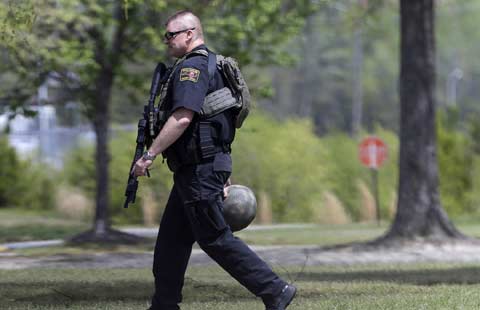Officials urged to take lead in Buddha's retrieval
Updated: 2015-04-14 20:31
By Yan Weijue(chinadaily.com.cn)
|
||||||||
It is high time Chinese authorities exerted their influence in demanding the return of a mummified Buddha statue from a collector in the Netherlands, overseas Chinese nationals claimed on Tuesday.
In a letter to the State Administration of Cultural Heritage, the Federation of Chinese Social Organizations in Hungary called for officials to make contact and negotiate with the anonymous Dutch collector regarding what is believed to be the statue of Patriarch Zhanggong belonging to a village in East China's Fujian province.
"We'll fully cooperate with Chinese authorities if necessary to bring about the return of the statue as soon as possible," read the letter, which was sent to the Chinese Foreign Ministry, the Overseas Affairs Office of the State Council and the Fujian Provincial Government as well.
The collector, through an intermediary, has said he would only respond to official requests, following a peaceful protest by members of some grassroots Chinese groups outside the Dutch Embassy in Hungary a day earlier.
He also revealed that no official message, from any authority, has reached him yet.
Commissioned by villagers for retrieval of the statue, the Federation of Chinese Social Organizations in Hungary has done a great deal over the past month, including drafting two open letters to the collector and another to the Dutch Prime Minister.
Federation members also presented two petitions to the Dutch Embassy and a European Commission organization in Hungary.
Background
The statue of Patriarch Zhanggong went missing from Yangchun village in Datian county in December 1995.
Zhanggong was said to be a locally respected monk during the Northern Song Dynasty (960-1127). After he passed away, people mummified his body and made him into a statue which had been worshipped until the theft.
A Yangchun villager found pictures of a Buddha statue resembling the Zhanggong one on the Internet in early March. It was being displayed at the Natural History Museum in Hungary having been borrowed from the Drents Museum in the Netherlands before being pulled from the exhibition by the collector amid growing concerns over ownership.
The collector has acknowledged that the previous "owner" of the statue acquired it from a Chinese artist friend around 1995 and said he is willing to return it if there was adequate evidence to prove it is the same as the stolen one.
One of the most irrefutable pieces of evidence is that the statue's cushion contained Chinese characters reading "Patriarch Zhanggong" and "Puzhao", the name of the temple that used to house the statue in Yangchun village.
The State Administration of Cultural Heritage confirmed the statue was the stolen and is working with other bodies to secure its return, according to a Xinhua report.
Related reading:
Peaceful protest staged in Hungary for return of mummified Buddha

 Oil paper umbrellas made in Sichuan
Oil paper umbrellas made in Sichuan
 Ex-student sought in shooting death of North Carolina college
Ex-student sought in shooting death of North Carolina college
 Women in politics - Hillary Clinton is just one of them
Women in politics - Hillary Clinton is just one of them
 10 Red Dot Award winning carmakers in '14
10 Red Dot Award winning carmakers in '14
 Get a birthday cake for your pets
Get a birthday cake for your pets
 7 ways to beat 'spring sleepiness'
7 ways to beat 'spring sleepiness'
 Legendary painting of Mona Lisa recreated
Legendary painting of Mona Lisa recreated
 National festival underway with cherry blossoms in peak bloom
National festival underway with cherry blossoms in peak bloom
Most Viewed
Editor's Picks

|

|

|

|

|

|
Today's Top News
US to help smart cities
Clinton's win not guaranteed despite global celebrity
US has record number of applications for H-1B tech visas
Chinese economy to slow more: World Bank report
China's slow down has upside
US voluntary medical team funded for China trip
Hilary Clinton launches
presidential campaign
'No room' for election China-bashing: US politicians
US Weekly

|

|








